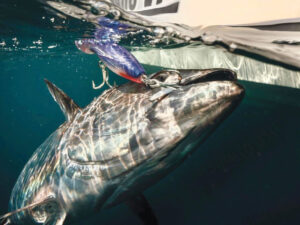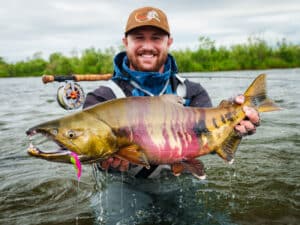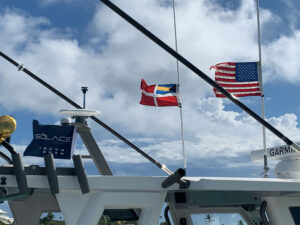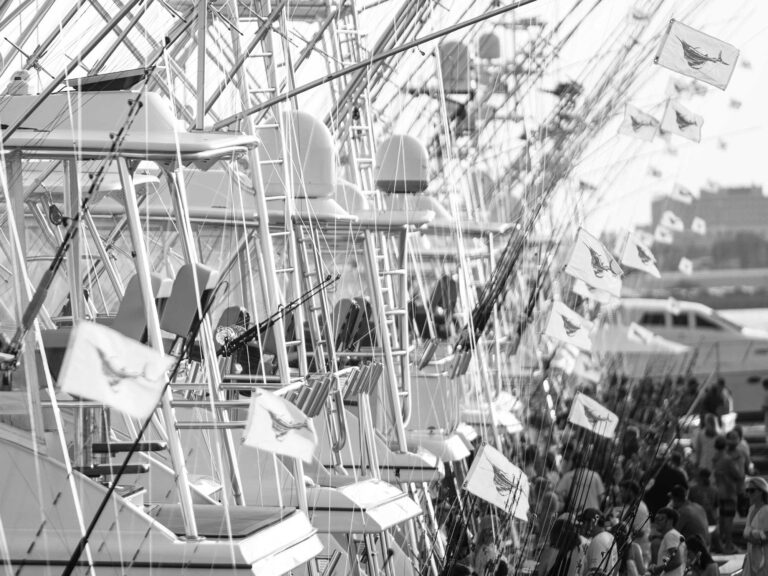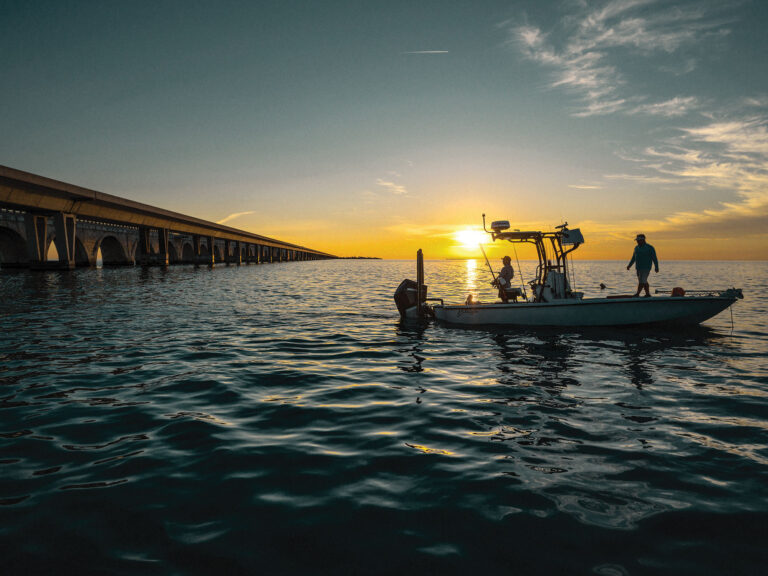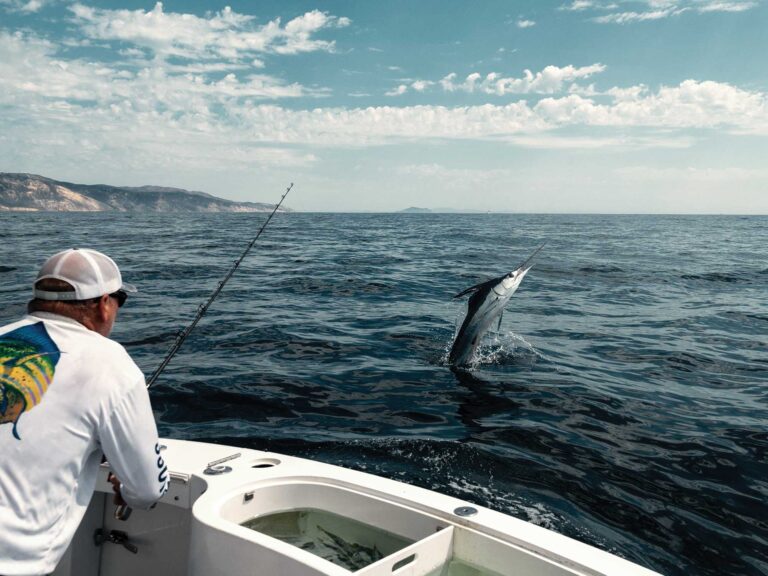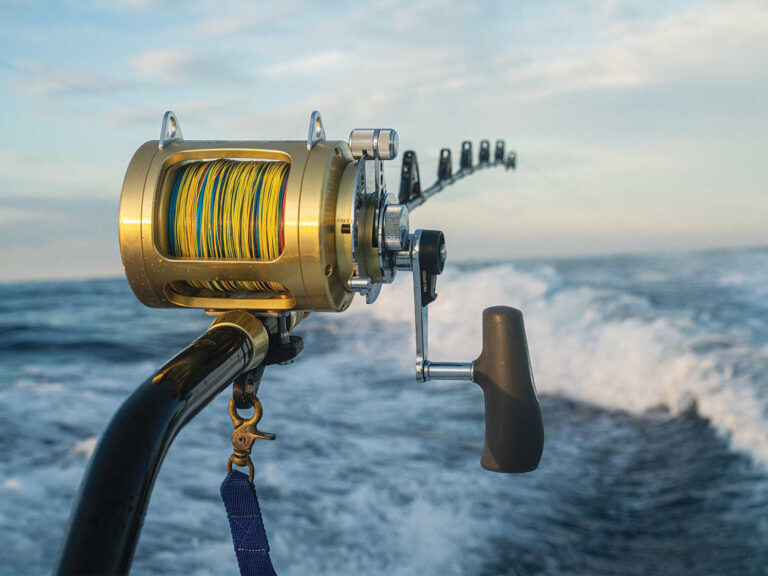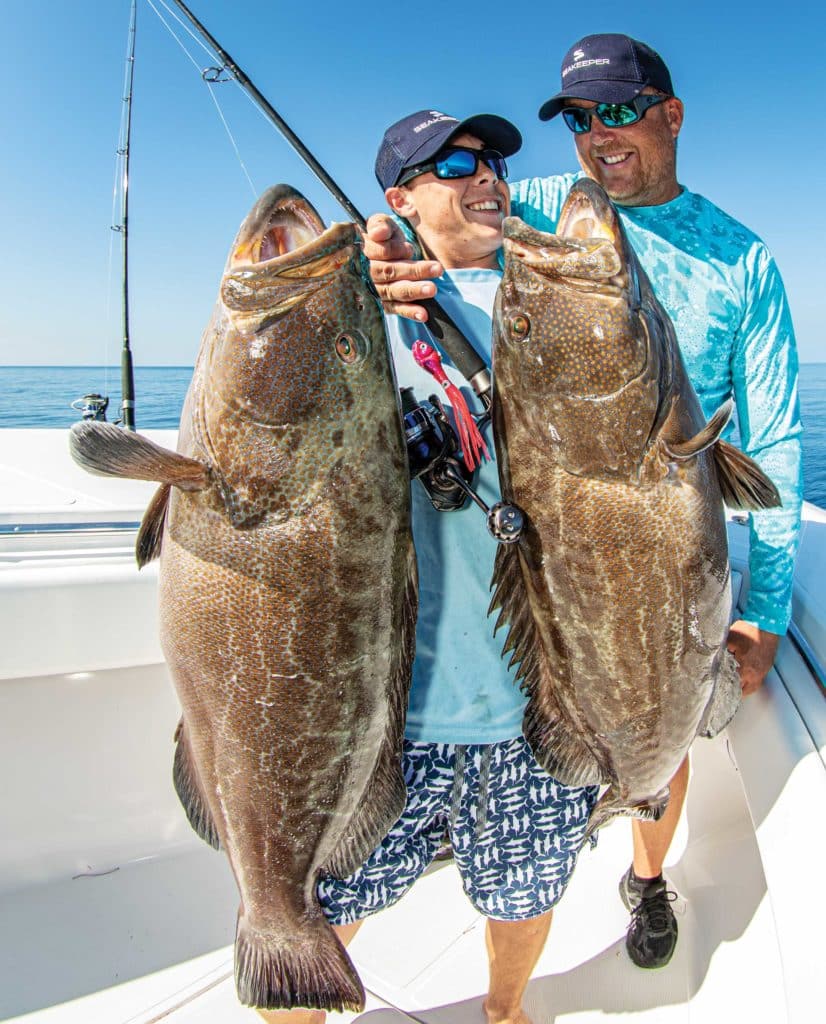
Anglers in the lower Keys speak of a deepwater location called the Valley of the Giants, where big black grouper show up reliably, season after season. Whether factual or somewhat embellished, the legend of the valley is a testament to the respect Keys anglers give black grouper, the toughest bottomfish to beat this side of 300 feet, and arguably one of the best on the dinner table.
Fish Reefs, Wrecks and Ledges for Black Grouper
On the Atlantic side of the Keys, you’ll primarily find blacks at three structure formations: around coral heads at the main reef, wrecks beyond the reef, and along live bottom and ledges beyond the main reef line, usually between 130 and 250 feet deep. A fourth structure, the patch reefs in Hawk Channel, hold grouper in winter, but that’s primarily during a traditional spawning-season closure.
An important feature of bottom relief in the Keys is the intermediary reef line, a dead reef that rises up just beyond the main reef line and runs parallel. That structure runs only intermittently, however. In the upper Keys, the intermediary reef line runs from Carysfort to Molasses Reef, and then drops off in the middle Keys. Its profile rises again in the lower Keys and continues southwest of Key West. Where it runs and doesn’t, along with the water quality, determines the nature of the black grouper fishing in that area.
Key Largo has a strong bottomfishery off the reef and in deeper water. I’ve had incredible days of black grouper fishing there. The Gulf Stream flows close to the fishing grounds, bringing good water quality. Key Largo anglers are big on live baits, especially speedos, often available in local waters and considered one of the best baits for big grouper. Even a local party boat, Capt. Chandler Warren’s Gulf Stream, is a renowned grouper-catching ride.
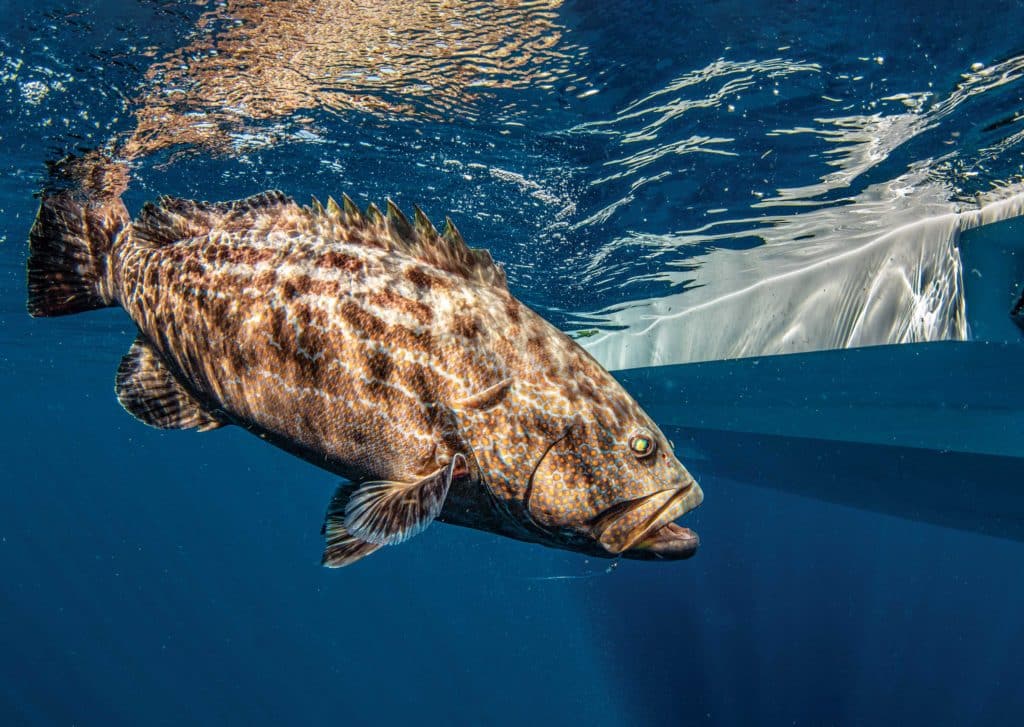
“The opening of the season [often] coincides with some of the best mutton snapper and yellowtail fishing of the year,” Warren says, “so those are great times on our boat.”
To the southwest, off Islamorada, the secondary reef isn’t as prominent, so Capts. Ryan and Scott Wenzel, brothers who together run 4Reel Charters, search for black grouper closer to the main reef.
“The reef drops off quickly here, from 60 to 90 feet,” Ryan says, “and we look for spotty, live bottom, and coral heads that stack up on the roll-off from the reef. Our go-to depth is about 80 feet.”
You want to mark coral heads, Ryan adds, but also read the surrounding bottom for yellowtails, live growth and nearby relief. For more accurate reads, he sets his sonar on high chirp.
“If you don’t have chirp,” he says, “set your fish finder to 200 kHz to read the bottom and tell whether it is live or not. On the screen, there will be fuzz showing on the bottom, not hard, solid marks. You won’t really mark the black grouper. They might be underneath the rocks. It’s more about looking for that live area than about a single fish mark or one spot.”
Anchor and Chum to Catch Black Grouper
“We anchor for black grouper because that’s how we catch the bigger ones,” Scott says. “The more you sit on a spot and chum, the more likely that the fish will come in. In addition to block chum off the stern, we’ll drop chum balls, even before we send down a bait. When the chum ball hits the bottom and disintegrates, the grouper really get curious.”
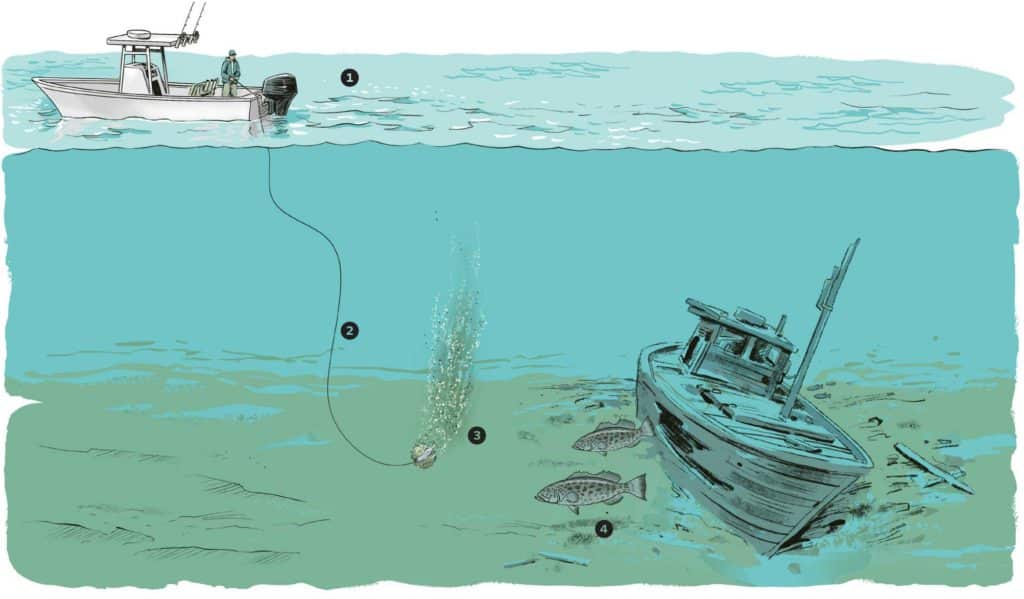
Some anglers use sand in their chum balls, while others prefer to mix in oats. Both combine the chum balls with attractants, such as thawed block chum, bits of cut bait or menhaden oil. To be effective, the ball must hold together as it sinks and break apart once it reaches the bottom.
While the brothers target black grouper with heavy outfits and braided line to get the fish up fast, they also use a long 150-foot mono top shot to absorb some of the shock during the fight. “You pull a lot of hooks if you don’t have the top shot,” Ryan says.
Drift Fishing for Black Grouper
In the lower Keys, the deeper side of the intermediary reef makes terrific drifting grounds for black grouper. In my days in Key West, we’d routinely catch nice ones in 250-foot depths, drifting jigs tipped with bait on light tackle within sight of Sand Key Light.

“My favorite way to target black grouper is to drift over active bottom in a couple hundred feet of water, way west of Key West,” says Capt. Jamie Connell of Flying Fish Charters. “I like to cover ground, and if I find a small area that is significantly more productive, I can anchor on that specific spot. Also, by drifting, I feel like it is harder for other predators like sharks to stay with me and eat our baits or the fish we’re targeting.”
Read Next: Florida Bottomfishing for Snapper and Grouper
For those times when conditions make anchoring at a wreck favorable for targeting black grouper, Connell has a few tips: “You will never get a grouper out of a wreck if you’re sitting directly over it, so anchor way up-current and let out enough anchor line to get close. A lot of big predatory fish, like black grouper and jacks, tend to be on the up-current side of the wreck, while fish like mutton snapper prefer to hang out on the down-current side. If you spot more marks up-current, what you’re seeing on your fish finder is probably some grouper.”
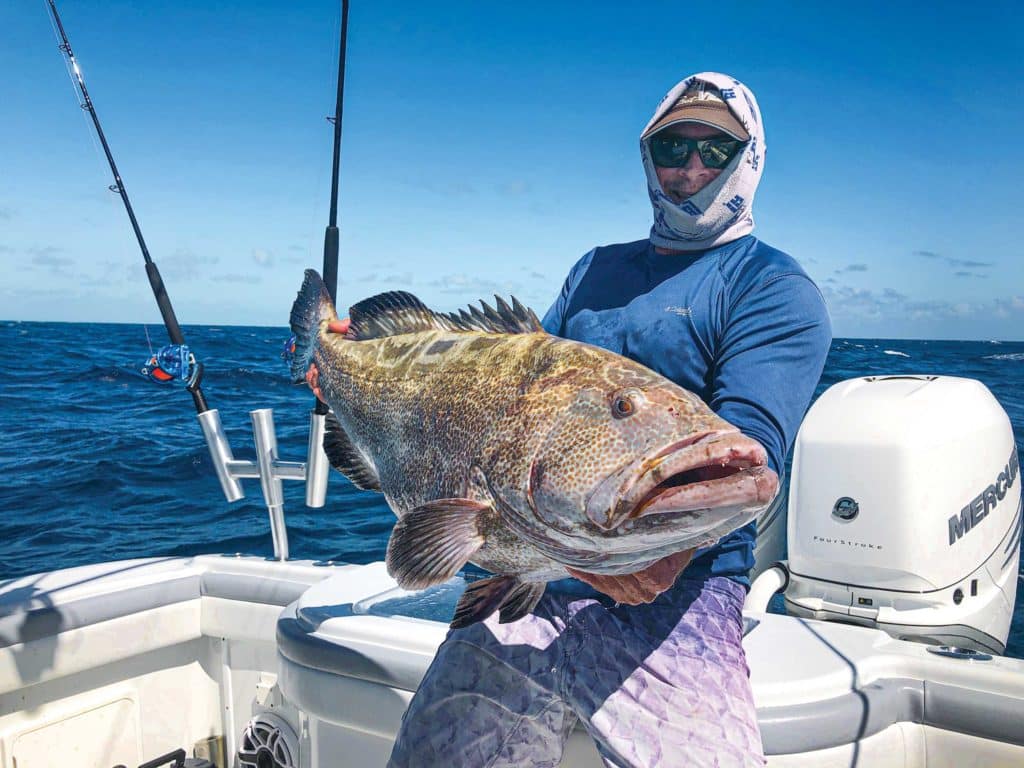
Connell, like the Wenzels and most other captains now, uses heavy gear and braided line. “Regardless of where I’m targeting black grouper,” he says, “I always start out with a heavy outfit. You don’t want to get smoked by a big one right away.”
Reliance on heavy gear is understandable. Black grouper are big and powerful, and while they often give you a second chance, it may not be on the same day.
Black Grouper Tackle and Rigs
Wenzel Brothers’ Setup
- Rod: Shimano 5-foot- 6-inch Tallus bent butt or equivalent
- Reel: Shimano Tiagra 50-wide, 80-wide or equivalent
- Line: 65- to 80-pound braid, 150 to 200 feet of 50-pound mono top shot, 15 feet of 60- to 80-pound mono leader
- Terminal Tackle: 10-ounce egg sinker, 8/0 or 9/0 circle hook
- Bait: Live speedos, grunts, jacks
Florida Keys Black Grouper Fishing Tips
- What: Black grouper
- When: May through December
- Where: Florida Keys
- Who: Anglers on boats capable of fishing some 10 miles off the coast. From most Keys marinas, access to grouper grounds is only out that far, or even closer. The following charter operations will also put you on fish:
Gulf Stream Party Boat
- Key Largo
- 305-451-9788
Capts. Ryan and Scott Wenzel
- 4reel-charters.com
- 786-860-2320
Capt. Jamie Connell
- flyingfishkw.com
- 305-304-7667

